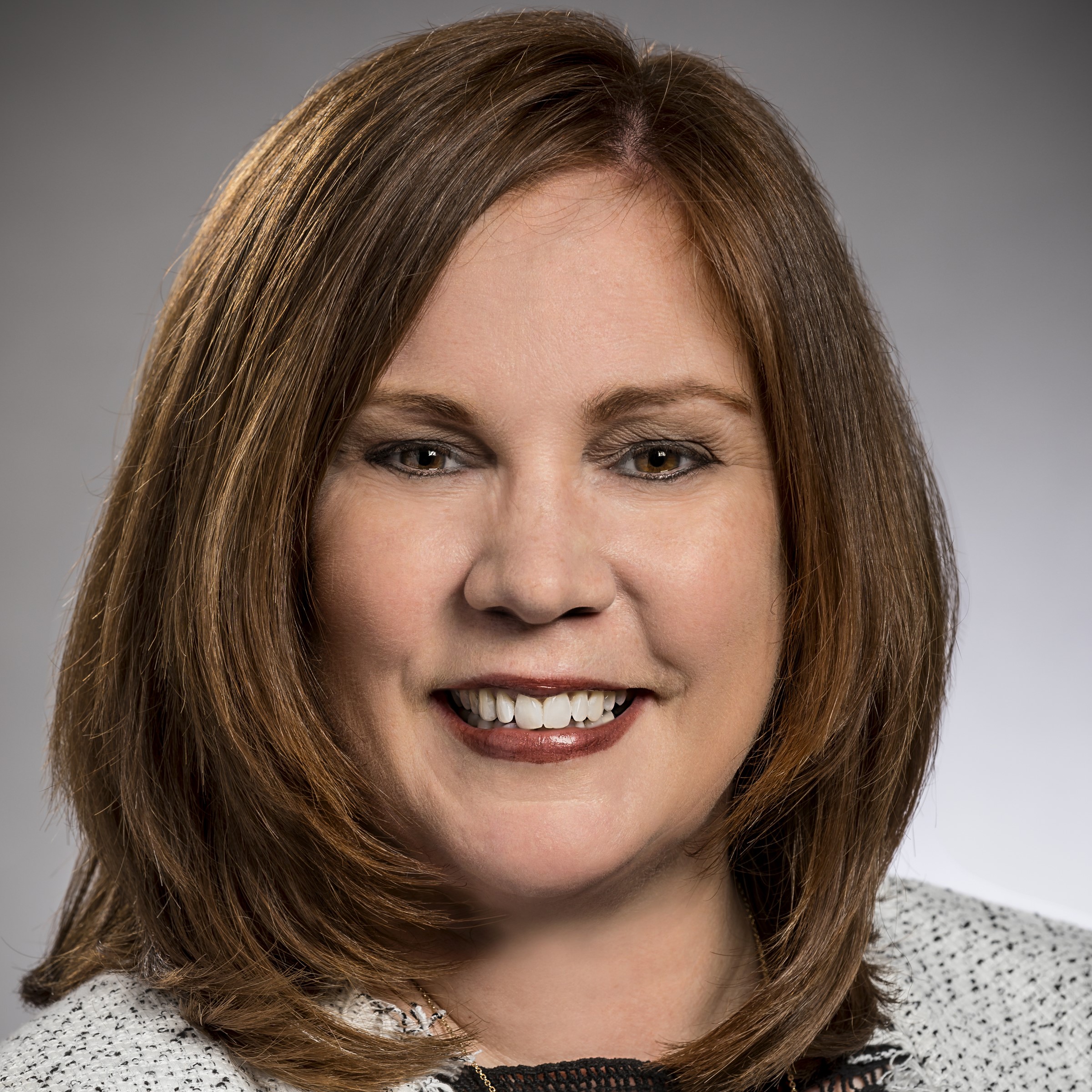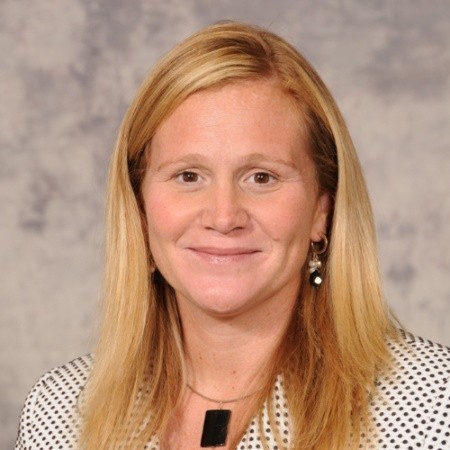Nurse leaders share strategies for recognizing, recruiting and retaining nurses

By Medline Newsroom Staff | May 6, 2024
This year’s National Nurses Week theme—“Nurses make the difference”—honors “the incredible nurses who embody the spirit of compassion and care in every healthcare setting.”
The nation’s largest healthcare workforce with nearly 5.2 million registered nurses nationwide, nurses play a crucial role in providing safe, quality care and outcomes across the continuum of care, safeguarding the health and wellbeing of individual patients and the greater community.
They’re the “backbone” of patient care “and so versatile in what they do,” said Karyn Book, DNP, RN-BC, Vice President of Care Services and Chief Nursing Officer at Penn Medicine Princeton Health. “Nurses are the ones with the patients at the bedside from beginning to end. Specialists and consultants may come in and out of the room, but it’s really the nurse who ties it all together.”
“We’re with people at birth and death and when they’re vulnerable, afraid and anxiety-ridden,” said Jennifer Torosian, MSN, RN, NEA-BC, Associate Chief Nursing Officer at Catholic Medical Center in Manchester, New Hampshire. During tough times, “we’re their family.”
“It’s going to be vital that we attract and retain nurses coming into the profession, and that we are able to train them and give them the skills they need to stay at the bedside.”

Karyn Book, DNP, RN-BC
Vice President of Care Services and Chief Nursing Officer
Penn Medicine Princeton Health
Medline recently spoke to Book and Torosian, along with Suzanne T. McCoy, DNP, RN, NNP-BC, NEA-BC, Vice President and Flinn Family Chief Nurse Executive at Northwestern Medicine Central DuPage Hospital; and Lourdes “Marilou” Salao, MSN, PHN, RN, Chief Nursing Officer at St. Francis Medical Center, a member of Prime Healthcare in Lynwood, California. The nurse leaders shared their perspectives on the vital role of nurses; ongoing challenges related to staffing, retention, evolving technology and patient care; and how hospital systems and other care facilities can support, engage, empower and educate nurses to secure the future of the profession.
The state of nursing today
The pandemic amplified the value of nurses within the healthcare system, along with vulnerabilities in hiring and retention and evolving technologies, equipment and care. Approximately 100,000 nurses left the workforce during the pandemic “due to stress, burnout and retirements,” according to NCSBN, and another 600,000 intend to leave by 2027. Nearly one-quarter of nurses are expected to leave their role this year alone, according to Incredible Health’s 2024 State of U.S. Nursing Report, highlighted in Fierce Healthcare, resulting in ongoing staff turnover, recruitment and training.
“It’s going to be vital that we attract and retain nurses coming into the profession, and that we are able to train them and give them the skills they need to stay at the bedside,” said Book.
Salao agreed: As more experienced nurses retire, “we’re seeing a rise in newer graduates or novice nurses,” many of whom stay one or two years and then move to another hospital or healthcare system, and/or pursue a master’s degree to become a nurse practitioner. For hospitals, “it’s creating this cycle of continuous recruitment.”
88%
of nurses believe patient care is being negatively impacted by staffing shortages1
63%
of nurses say they are assigned to care for too many patients at a time1
While the State of U.S. Nursing report found that nurses are slightly less dissatisfied with current staffing levels compared to 2023, 88% believe that staffing shortages are negatively impacting patient care. More than half of nurses (63%) say they are assigned to care for too many patients at a time, and nearly a quarter reported that they regularly perform tasks outside of their job description due to staffing shortages.
“It’s extremely difficult for nurses to be able to work to the top of their license and to perform everything that they need to do,” said Torosian.
The staffing shortage is exacerbated by a patient population with a higher acuity level as simpler procedures are frequently conducted outside of the hospital or on an outpatient basis, said McCoy. Acute care requires more advanced equipment and technology, and related training and care. Nurses are caring for “the sickest of the sick in the hospital setting, and the acuity of our patients is taking a toll on nurses.”
Nurses also face a greater risk for workplace violence and verbal abuse with half of nurses saying they were verbally or physically assaulted by a patient or the patient’s family in the past year, according to the State of U.S. Nursing Report.
“It’s extremely difficult for nurses to be able to work to the top of their license, and to perform everything that they need to do.”

Jennifer Torosian, MSN, RN, NEA-BC
Associate Chief Nursing Officer
Catholic Medical Center
Manchester, New Hampshire
“When you’re faced with violence, and fearful of your patients or the visitors, it’s a major concern for our nurses at the bedside,” said McCoy. “Patients are receiving the best care, and we hope in return our patients give us that same respect, care and kindness.”
Despite these and other obstacles to job satisfaction and optimal care, nurse leaders are optimistic about the future, tackling challenges head on and applying innovative solutions to recruiting, rewarding and retaining a well-trained workforce.
Prioritizing recruitment and education
To help create an ongoing pipeline of students interested in pursuing a career in nursing, St. Francis Medical Center created a Career Exploration Program in partnership with local school districts.
The program “is giving our high school students the opportunity to come to the hospital to learn more about being in the healthcare profession,” said Salao. “In high school, there are some students who have never been to a hospital. To actually see people in action caring for other people, they’re amazed at what we do.”
Penn Medicine Princeton offers an Empower Program, which assists post-high school students interested in pursuing a nursing career but without the financial means to do so. “As chief nursing officers, we also need to work closely with the schools to make sure that their curriculums match what the need is in the hospital going forward,” said Book.
In addition, improving clinical educator compensation can increase the number of educators and allow for more undergraduate nursing students, said Torosian. “We need to look at our structure and our pipeline of educators; clinical educators as well as our classroom educators.” This includes preceptors, the nurses who provide on-site clinical education. “When novice nurses are supervising students, how do we train and prepare them?”
“Nurses are some of the most innovative people that I know. If we give them the opportunity to share what they see as new and better ways of doing things, then they know that we see them as a partner in the provision of care that we provide.”

Lourdes “Marilou” Salao, MSN, PHN, RN
Chief Nursing Officer
St. Francis Medical Center, a member of Prime Healthcare in Lynwood, California
McCoy says she accepts “as many nursing students as we possibly can” for clinical training at Northwestern Medicine Central DuPage Hospital. “It’s a way to recruit. We need them in our profession. We’re eliminating the number of nurses who enter the profession because of the lack of available education and clinical sites.”
Providing mentorship, viable career paths for nurses
Mentoring, ongoing “stay” interviews, and partnering with nurses to create viable career paths can also help to retain and empower nurses.
“For our new grads coming in, we ensure that they have some mentor support, that they are with peers and able to share what their concerns are,” said McCoy.
It’s also important to provide the nurses who serve as mentors and role models with “the tools they need to be successful, said Torosian, “so they can have difficult conversations.”
As nurses progress, “stay interviews” can help to identify nurse concerns before they lead to a job search or transfer.
“We always did exit interviews, but now we’re doing stay interviews,” said Book. “What keeps you here? What do you see? And then the question isn’t ‘Where do you see yourself in five years?’ but instead, ‘What are your goals for the next one to two years?’” Especially for younger nurses, “it’s important to guide them through the pathway and the career of nursing. If a nurse is in med-surg but interested in critical care, we want to really help that nurse; to plan a pathway to critical care.”
Torosian agreed: “You want to grow your organization and meet your goals, but you also want to grow your nurses and partner with your nurses to figure out what their interests are and give them new opportunities.”
“I think we as a team have really morphed into what the profession has needed us to be, and that is to be more technologically astute, to be more advanced in our critical thinking, and to be in sync with our patient’s emotional and physical needs. We have done a great job in ensuring that we are positioning ourselves well for caring for our patients in the future.”

Suzanne T. McCoy, DNP, RN, NNP-BC, NEA-BC
Vice President and Flinn Family Chief Nurse Executive
Northwestern Medicine Central DuPage Hospital
“We want our nurses to be able to grow in their chosen profession and happy in the role that they’re in,” said McCoy. “We feel that helps our nurses stay within our organization. There’s a lot to onboarding a new nurse, and when it’s the right fit in terms of culture, skill and personality, we want to keep them.”
Creating ‘a sense of family’
In addition to competitive wages and benefits, a flexible schedule and career advancement opportunities, nurses want to feel supported, respected and recognized for their hard work.
McCoy says creating “a sense of family within the unit” has helped improve retention rates at her hospital. “Anything that you choose to do, whatever it is, if you find a group of people who you have a mutual respect for, and who have great collegial, respectful interaction, then you are going to have satisfaction within that environment, and especially in the workplace.”
She also believes that “reward and recognition” are crucial in fostering “a sense of value and appreciation,” adding that “appreciation cascades.” From a patient “saying thank you as they’re walking out the door, or a colleague expressing gratitude for the help they provided. These recognitions improve job satisfaction and tenure.”
Book agreed: “When I take the time to read a letter to the entire unit that a patient wrote, or when I send a hand-written note to a nurse when a patient recognized them, that’s when I get emotion; that’s where I get the thanks and tears. It brings them back to why they’re there. It truly is a calling and not everyone can do the work that they do day in and day out. So, I like to remind them of that. Recognition goes a long way.”
Encouraging patient-centered care, innovative solutions
Innovative solutions often come from the bedside, and maintaining a culture where new ideas are fostered and rewarded, can help nurses feel heard and empowered.
“Nurses are some of the most innovative people that I know,” said Salao. “If we give them the opportunity to share what they see as new and better ways of doing things, then they know that we see them as a partner in the provision of care that we provide.”
This is especially important as nurses assume more tasks outside of the scope of nursing.
“I think that we need to change how we deliver care to ensure that we’re working at the top of our license,” said Torosian. She suggested that nurses work more closely with other healthcare disciplines and partners to develop innovative solutions, such as assigning non-nursing staff to specific tasks.
Successfully advocating for and supporting nurses within a hospital or healthcare system often requires strong internal partnerships—with the C-suite, as well as the supply chain, environmental services, transport and other internal teams.
“Nurses are at the frontline delivering care,” said McCoy, “but it takes a village of people for them to do that.”
“We know nurses interface with all parts of the hospital,” said Salao, “and I’m honored to have the privilege to be a voice for nursing. I share their stories, their successes, and their challenges. By keeping that close connection with the nursing staff, I have the ability to accurately represent them, and then collaborate with all of the other stakeholders in providing the best patient care services.”
The future of nursing
Book expects that more complex in-hospital care will mean ongoing technological advancements and the need for related training. As a result, nurses will need to prioritize and continue to find innovative ways to “humanize technology. With so many AI and other tools, we have to make sure that nurses are still able to have the human touch and to be able to have face-to-face conversations.”
“I’m hopeful for the future of nursing,” said Torosian, who has been a nurse for more than 20 years. “There are many kind people who are patient-focused and know that they want to go into healthcare.”
“I think the future of nursing is bright,” said McCoy. “I think we as a team have really morphed into what the profession has needed us to be, and that is to be more technologically astute, to be more advanced in our critical thinking, and to be in sync with our patient’s emotional and physical needs. We have done a great job in ensuring that we are positioning ourselves well to care for our patients in the future.”
References:
- Incredible Health (2024). 2024 State of US Nursing Report. Retrieved May 3, 2024: https://www.incrediblehealth.com/state-of-nursing/.
Medline Newsroom Staff
Medline Newsroom Staff
Medline's newsroom staff researches and reports on the latest news and trends in healthcare.

